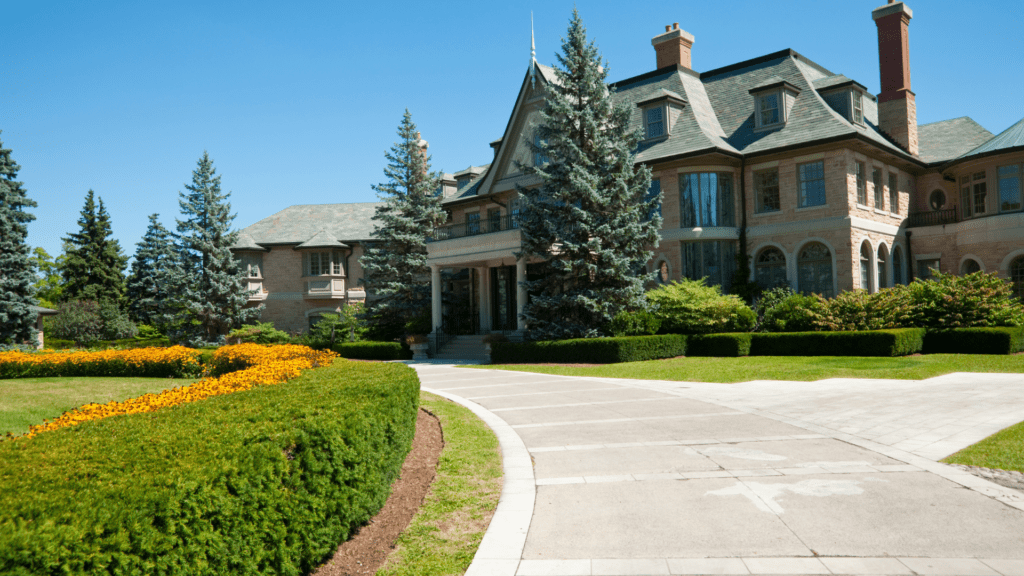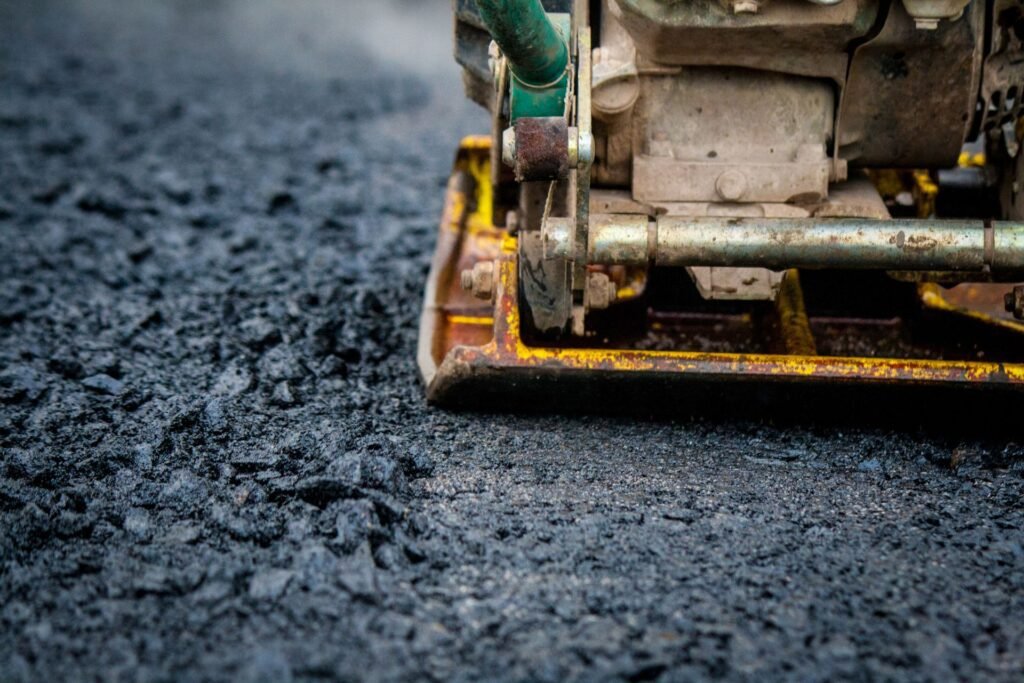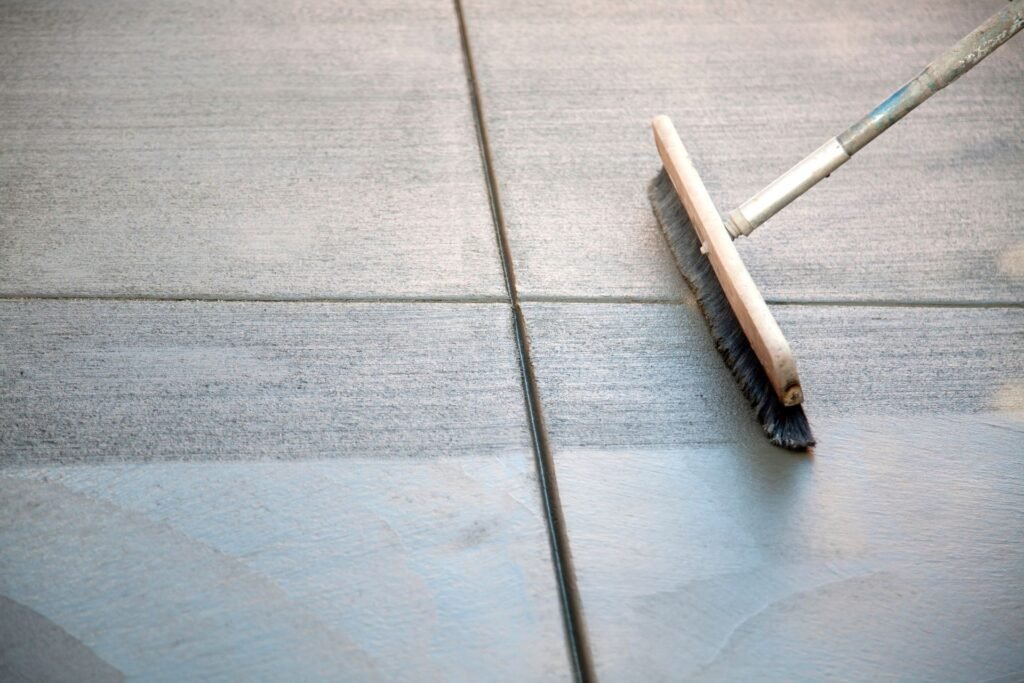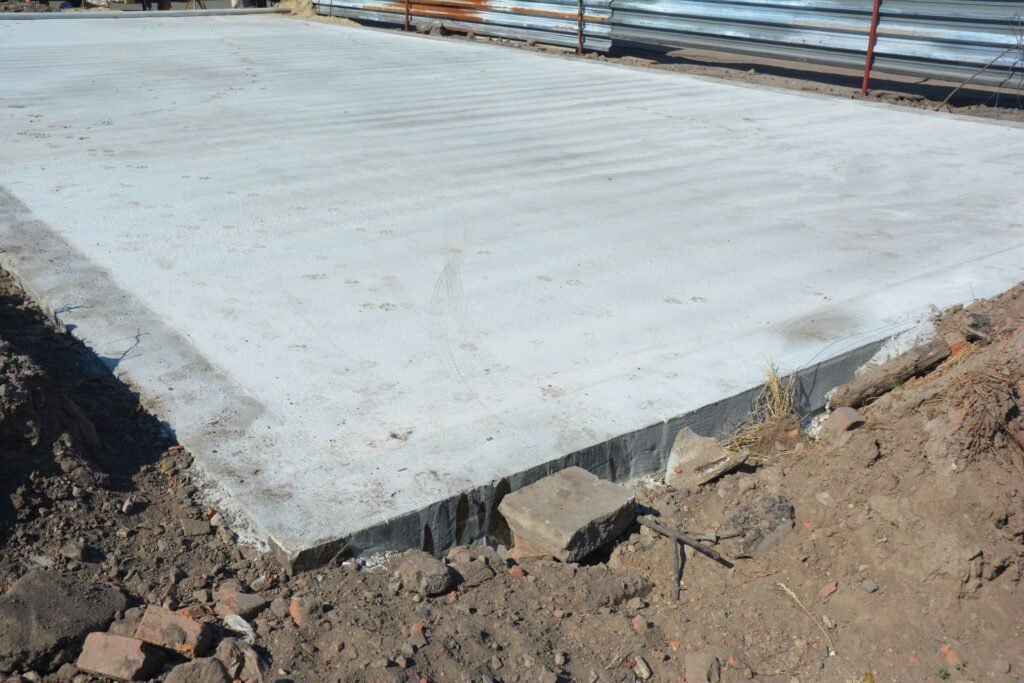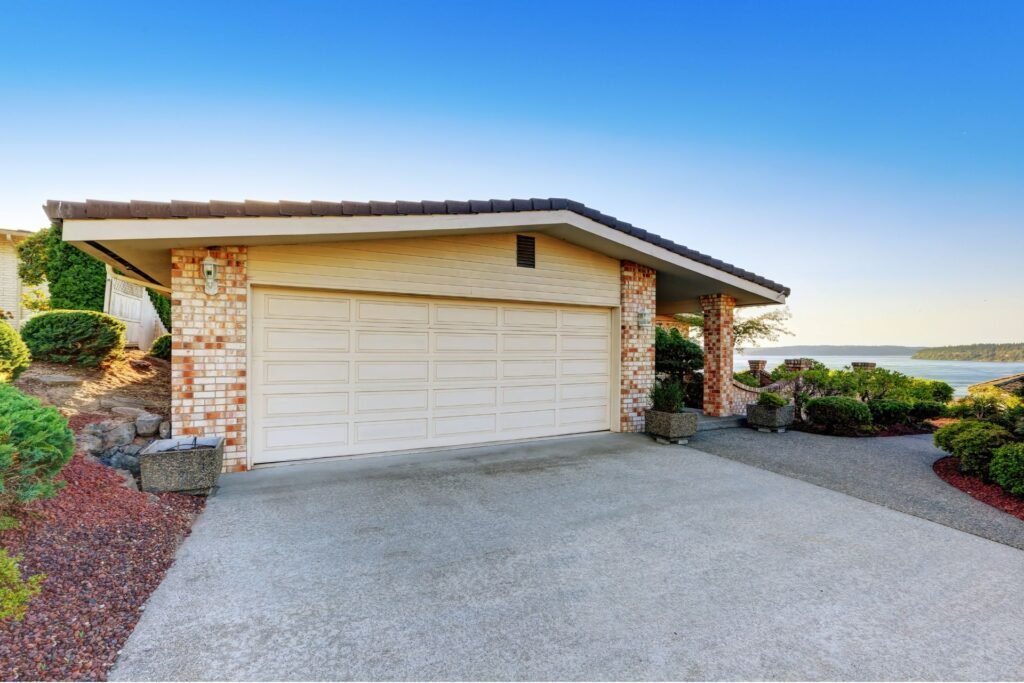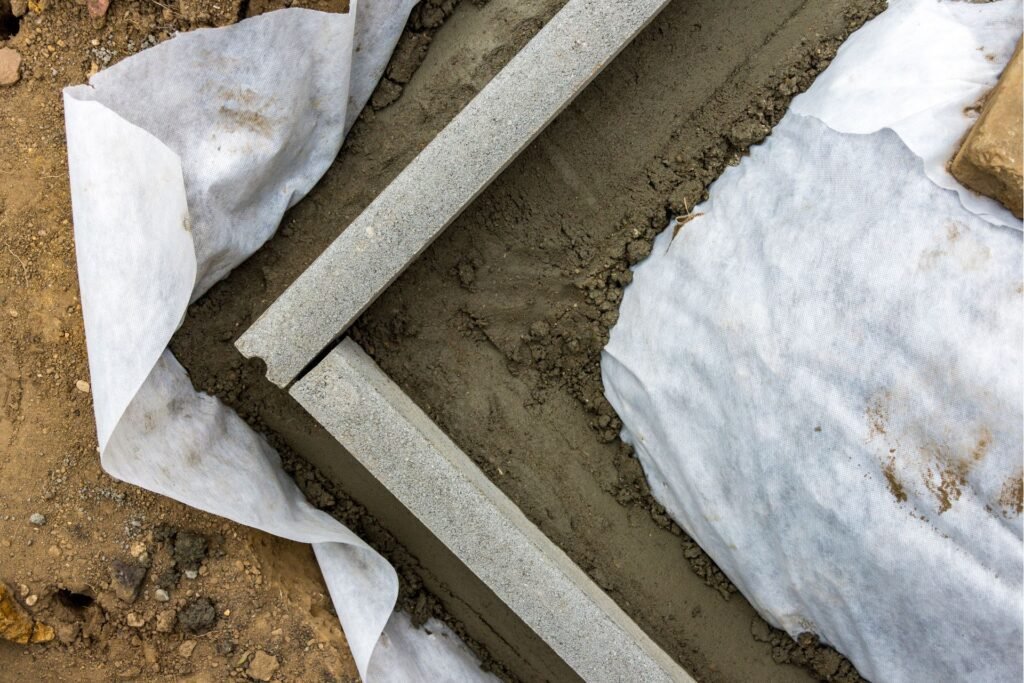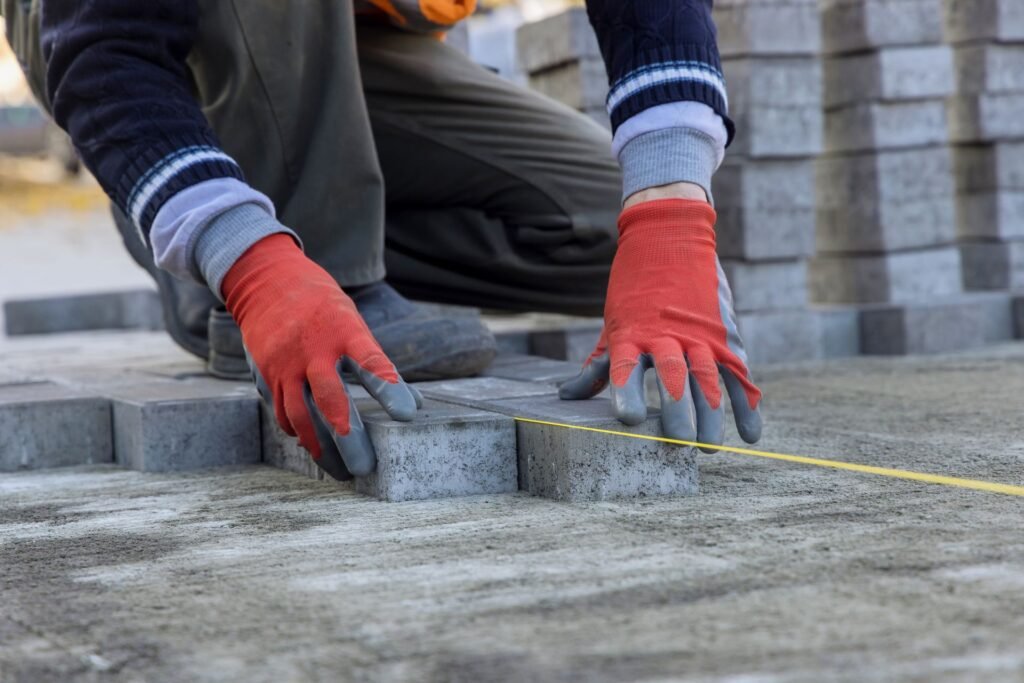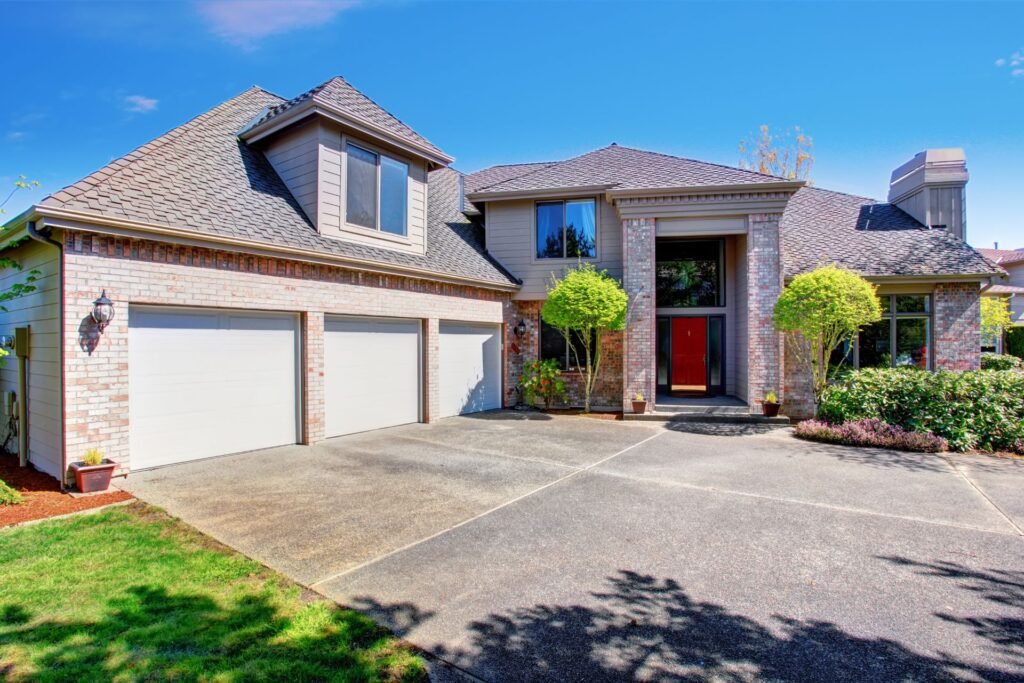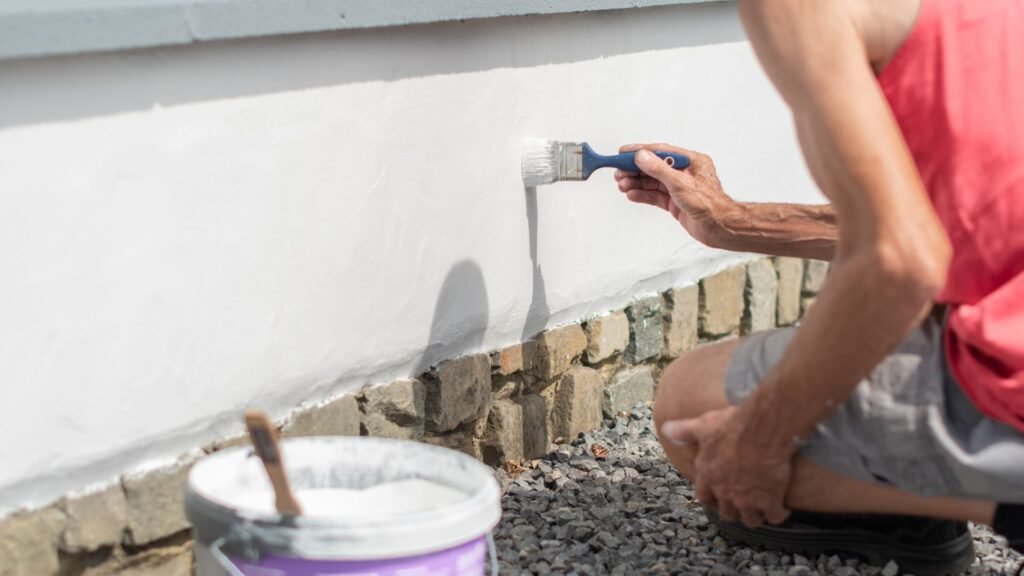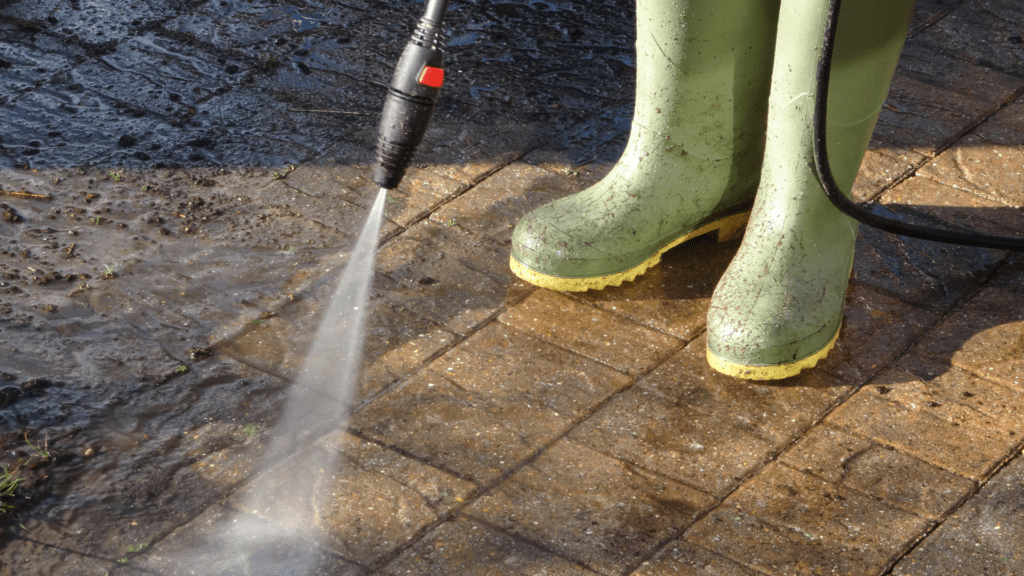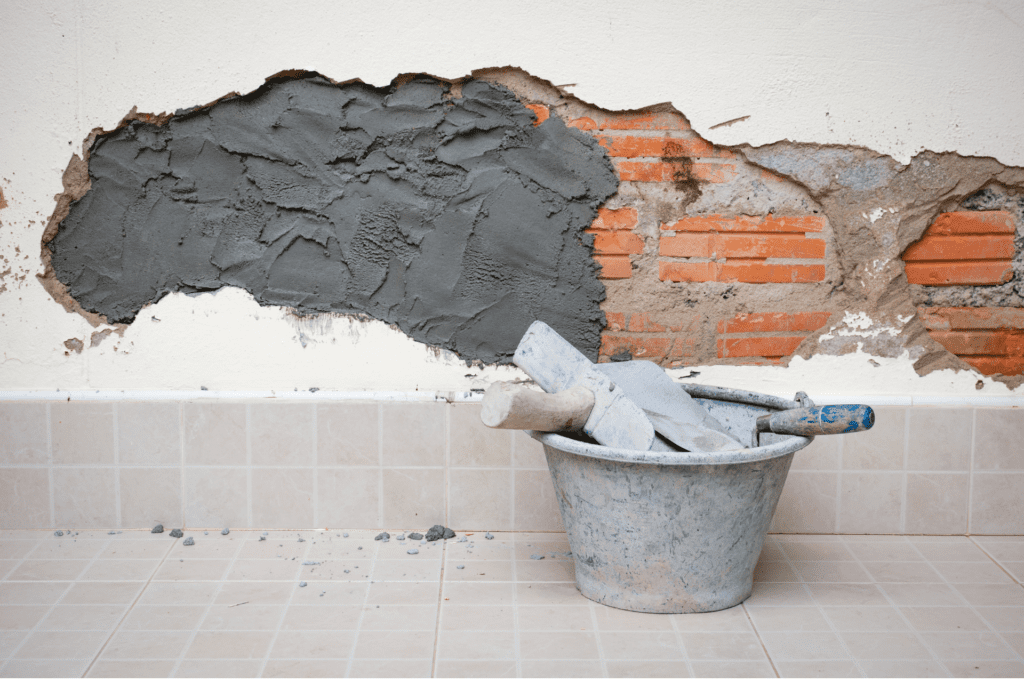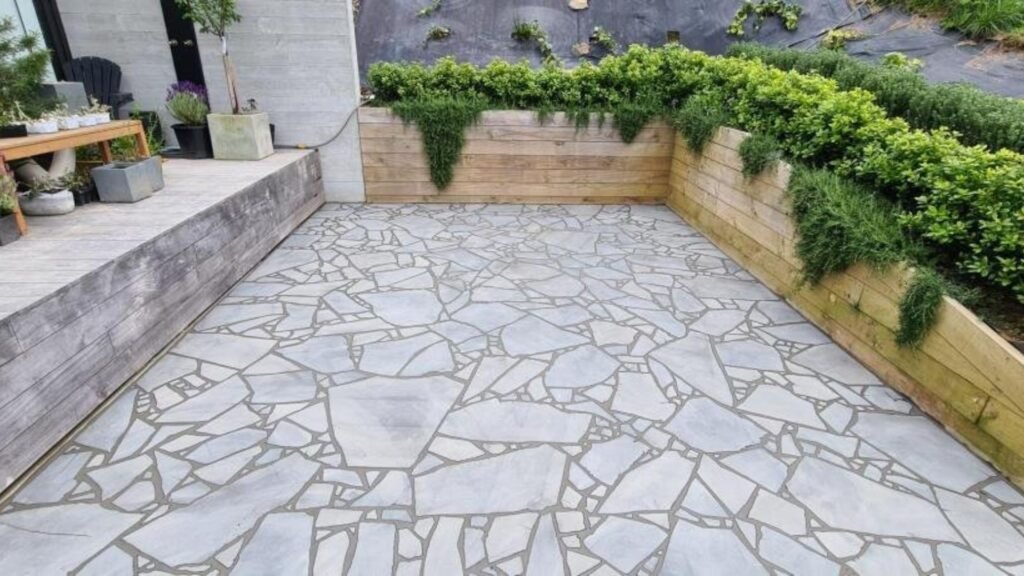Welcome to our comprehensive guide on driveway edging in New Zealand! Whether you’re looking to enhance your home’s curb appeal or improve the functionality of your driveway, this guide will walk you through everything you need to know about choosing the best edging materials and installation techniques. From durable options like concrete and stone to more natural choices like timber and gravel, we’ll help you make an informed decision that suits your home and NZ’s unique climate. Whether you’re planning a DIY project or considering hiring a professional, this guide will ensure your driveway edging not only looks great but stands the test of time.
Driveway edging in NZ involves creating a durable boundary along the sides of your driveway to enhance curb appeal and prevent material erosion. Popular materials include concrete, brick, timber, stone, and gravel, each offering unique aesthetic and functional benefits. Proper edging not only boosts the appearance of your driveway but also helps with drainage and long-term maintenance, making it a smart investment for New Zealand homeowners.
Table of Contents
What Is Driveway Edging
Driveway edging refers to the practice of installing a physical boundary along the edges of your driveway. It not only enhances the curb appeal of your home but also serves practical purposes that improve the longevity and functionality of your driveway. Whether you have a gravel, asphalt, or concrete driveway, edging can make a significant difference in its appearance and durability.
Purpose of Driveway Edging
The main goal of driveway edging is to define and protect the boundaries of your driveway. This involves placing materials like bricks, stones, or metal along the sides to create a structured border. By doing so, you prevent driveway materials from spreading into surrounding areas like your lawn or garden, keeping your landscape looking neat and well-maintained.
In addition to visual appeal, driveway edging also provides structural support. It keeps the driveway material contained, reducing the risk of cracking or crumbling over time. This is especially beneficial for gravel or loose material driveways that tend to shift and spread without a proper edge.
Why Driveway Edging Is Important
Driveway edging isn’t just about aesthetics; it also plays a critical role in the functionality and longevity of your driveway. Here’s why it matters.
- Aesthetic Appeal: A clean, well-defined driveway with proper edging adds instant curb appeal to your property. It creates a polished look, seamlessly blending your driveway with the rest of your landscape design. Whether you’re thinking about selling your home or just want to improve its appearance, edging can make a big impact.
- Improved Functionality: Besides the visual benefits, driveway edging helps in keeping the material of your driveway in place. For example, gravel driveways without edging tend to spill out into lawns or flower beds, leading to a messy and uneven surface. By containing the driveway materials, edging maintains the smoothness of your driveway and prevents potential tripping hazards.
- Water Drainage: Properly installed edging also helps with water drainage. It prevents water from pooling on the driveway, directing it away from the surface, which helps reduce issues like cracks, potholes, or erosion caused by standing water.
Common Issues Without Driveway Edging
Without proper driveway edging, homeowners can face several problems that not only affect the look of their driveway but also its functionality. Here are some common issues.
- Soil Erosion: Water runoff can erode the soil around your driveway, especially during heavy rains. This can lead to an uneven driveway surface, making it less stable over time.
- Driveway Deterioration: Without the support of edging, driveways are more prone to cracking, chipping, or crumbling at the edges. This is particularly true for asphalt or concrete driveways, which rely on strong edges to maintain their structural integrity.
- Water Runoff Problems: A driveway without edging can cause water to run off unpredictably, leading to pooling or flooding in unwanted areas. This can damage both your driveway and the surrounding landscaping, resulting in costly repairs.
Driveway edging is an essential feature for any homeowner looking to maintain the beauty and longevity of their driveway. It not only enhances your property’s curb appeal but also protects the driveway from common issues like erosion and material spreading. Properly installed edging ensures that your driveway remains functional and visually appealing for years to come.

Types Of Driveway Edging Solutions In New Zealand
When it comes to enhancing the curb appeal and functionality of your driveway, choosing the right edging solution is key. Driveway edging not only defines the boundaries of your driveway but also plays a significant role in maintaining its structural integrity. In New Zealand, a variety of driveway edging options cater to different aesthetic preferences, budgets, and maintenance needs. Here’s a closer look at the most popular driveway edging solutions in NZ, each with its own unique pros and cons.
Concrete Edging
Concrete edging is a popular choice for driveways in New Zealand due to its durability and versatility. It’s a robust solution that can handle heavy traffic while offering various customization options.
Pros
- Durable and strong: Concrete edging is built to last and can withstand the wear and tear of daily use.
- Customizable finishes: You can choose from a range of finishes, including exposed aggregate for a textured look, smooth finishes for a sleek appearance, or even colored concrete to complement your home’s exterior.
Cons
- Higher cost: Compared to some other edging options, concrete is more expensive due to the materials and labor involved.
- Potential to crack: Over time, weather conditions like extreme heat or cold may cause cracks in the concrete, requiring repairs.
Brick or Paver Edging
Brick or paver edging offers a timeless, stylish appearance, making it a favorite for those looking to add a touch of elegance to their driveway.
Pros
- Stylish and versatile: Available in a wide range of colors and shapes, brick or paver edging allows for creative designs that can match both classic and modern home aesthetics.
- Customizable looks: Whether you want a traditional, polished look or something more contemporary, bricks and pavers can help achieve the desired effect.
Cons
- Labor-intensive installation: Setting each brick or paver requires careful placement, making installation time-consuming.
- Potential shifting: Over time, bricks or pavers may shift due to ground movement, requiring periodic adjustment.
Timber or Railway Sleepers
Timber edging, especially using railway sleepers, adds a rustic and natural appeal to driveways. This option is particularly suitable for properties with a rural or eco-friendly design.
Pros
- Natural and rustic aesthetic: Timber edging blends seamlessly with the natural environment, creating a warm, organic look.
- Budget-friendly: Timber is generally a more affordable option compared to other materials like concrete or stone.
Cons
- Prone to rotting: Over time, timber can degrade due to moisture and exposure to the elements, making it necessary to replace or treat the wood periodically.
- Maintenance required: Regular maintenance, such as re-sealing or treating the wood, is needed to prolong its lifespan.
Stone Edging
Stone edging is a premium option that delivers a natural, earthy feel, making it a perfect choice for homes with extensive landscaping or garden areas.
Pros
- Natural look: Stone edging complements New Zealand’s natural landscape beautifully, offering a seamless transition between your driveway and surrounding greenery.
- Highly durable: Stone is incredibly durable, capable of withstanding extreme weather conditions and heavy traffic without much wear.
Cons
- Heavy installation: The installation of stone edging can be labor-intensive and time-consuming due to the weight of the materials.
- Higher cost: Stone edging is often more expensive than other options, both in terms of material and installation costs.
Metal or Aluminum Edging
For homeowners seeking a sleek, minimalist design, metal or aluminum edging is a great option. This contemporary solution is both functional and visually appealing, especially for modern architectural styles.
Pros
- Sleek and minimalist: Metal edging offers a clean, modern look that complements minimalistic and industrial home designs.
- Strong and easy to install: Metal edging is durable and relatively easy to install, often requiring less time than options like brick or stone.
Cons
- Can be expensive: While metal edging is durable, it can be on the pricier side compared to timber or gravel.
- Limited aesthetic variation: Although it offers a sleek look, metal edging doesn’t provide the same range of aesthetic possibilities as other materials like brick or stone.
Gravel Edging
Gravel edging is an affordable and easy-to-install option that provides a natural, coastal vibe. This type of edging is a practical choice for areas that require good drainage.
Pros
- Affordable and easy to install: Gravel is one of the most cost-effective driveway edging solutions and doesn’t require professional installation.
- Great for drainage: Gravel allows water to drain easily, making it an excellent choice for areas prone to heavy rain or flooding.
Cons
- Requires regular maintenance: Gravel needs to be replenished and raked regularly to maintain its appearance and prevent shifting.
- Can shift over time: Like paver edging, gravel can move out of place due to foot or vehicle traffic.
Choosing the right driveway edging solution in New Zealand depends on a variety of factors, including your budget, aesthetic preferences, and long-term maintenance expectations. Whether you opt for the durability of concrete, the natural appeal of stone, or the rustic charm of timber, the perfect driveway edging will not only enhance the look of your home but also add value and curb appeal. Each material has its own strengths and potential drawbacks, so it’s essential to consider what works best for your home’s style and environment.

Choosing The Right Driveway Edging For Your NZ Home
When it comes to enhancing the curb appeal of your home, choosing the right driveway edging is a crucial step. Not only does it add a polished look to your driveway, but it also serves functional purposes such as preventing cracks, erosion, and maintaining the integrity of your driveway over time. In New Zealand, where the weather can be unpredictable and the environment diverse, selecting the right edging materials becomes even more important. This section will guide you through the key factors to consider when choosing the best driveway edging for your NZ home, ensuring you make an informed and lasting decision.
Aesthetic Preferences: Matching Your Home’s Exterior Design
Your driveway is one of the first things visitors see, so it’s essential that the edging complements the overall style of your home. Are you aiming for a sleek, modern look or a more rustic, natural aesthetic.
- Stone or brick edging: Can provide a classic, timeless appearance that pairs well with traditional homes or those with natural, earthy tones.
- Concrete or steel edging: On the other hand, offers a clean, minimalist look, ideal for contemporary homes with sharp lines and modern materials.
- timber edging: Might be a great choice, blending seamlessly into the landscape, especially for homes with a garden-focused design.
Remember, the goal is to choose a material that not only enhances your driveway but also ties in with the architecture and color palette of your house.
Climate Considerations in NZ: How Weather Impacts Edging Materials
New Zealand’s unique climate can greatly impact the longevity and performance of your driveway edging. Depending on where you live, you may face heavy rainfall, coastal salt exposure, or extreme temperature fluctuations.
- Coastal regions: If you’re near the coast, consider materials like concrete or composite edging, which are more resistant to salt corrosion and moisture damage.
- Rainy areas: In places with high rainfall, you’ll want to choose materials like stone or concrete that can withstand water exposure without deteriorating. Timber, while aesthetically pleasing, may warp or rot over time if not properly treated.
- Frost-prone regions: If you live in colder areas, avoid materials that may crack under freeze-thaw conditions. Opt for durable options like pavers or steel, which can better endure the freeze cycles common in colder regions of New Zealand.
Taking into account how the weather affects each material will ensure your driveway edging stands the test of time.
Comparing Costs of Different Edging Types
Cost is always a consideration when undertaking home improvements, and driveway edging is no exception. Prices vary depending on the material, installation complexity, and longevity of the edging type.
- Concrete edging: is typically one of the most affordable options, offering a balance between cost and durability.
- Stone and brick edging: while more expensive, provide a luxurious and long-lasting solution.
- Steel edging: may have a higher upfront cost but requires minimal maintenance over time, making it a cost-effective choice in the long run.
- Timber edging: is generally cheaper but may incur higher maintenance costs due to weather-related wear and tear.
Understanding the costs associated with each material will help you find the right balance between aesthetics and affordability.
Maintenance Requirements
Some materials require regular upkeep to maintain their appearance and durability, while others are more hands-off. Depending on your lifestyle, you’ll need to consider how much time and effort you’re willing to invest in maintaining your driveway edging.
- Concrete and steel: edging are relatively low-maintenance, requiring occasional cleaning and inspections for cracks or corrosion.
- Stone and brick: may need some attention to keep weeds from growing between the gaps, and periodic resealing may be necessary to preserve their appearance.
- Timber edging: while attractive, demands regular treatments to prevent rot, especially in humid or coastal areas. This can involve repainting or resealing every few years.
If you prefer an option that requires minimal upkeep, concrete or steel might be your best bet, whereas timber and stone may require a bit more care.
Durability and Longevity: Choosing Materials that Stand the Test of Time
New Zealand’s weather conditions, combined with the natural wear and tear from vehicle traffic, mean that durability is a key factor when choosing driveway edging. Different materials have varying lifespans, and it’s important to select one that fits your needs for longevity.
- Concrete and steel: are known for their durability and can last for decades with minimal maintenance. They resist cracking, weather damage, and wear from heavy traffic.
- Stone and brick: also offer excellent durability, though they may require occasional maintenance to keep them looking their best.
- Timber: while less durable, can last for several years with the proper care, but it may eventually succumb to rot or warping, particularly in wetter climates.
By choosing the right material based on its durability, you can ensure that your driveway edging remains functional and visually appealing for years to come. Choosing the right driveway edging involves balancing aesthetics, cost, maintenance, and durability. By considering New Zealand’s unique climate, your personal style preferences, and how much upkeep you’re willing to do, you can select a material that not only enhances your home’s appearance but also stands up to the elements. Whether you opt for classic brick, sleek steel, or natural timber, making an informed decision will add long-lasting value and beauty to your property.

Step-By-Step Installation Guide For DIY Driveway Edging
Creating a clean, polished look for your driveway doesn’t always require hiring professionals. With a bit of time and the right tools, you can install driveway edging yourself to add both visual appeal and functional boundaries to your space. In this comprehensive step-by-step guide, we’ll walk you through everything you need to know to install driveway edging like a pro.
Materials Needed for Driveway Edging Installation
Before you start, make sure you have the following tools and materials on hand.
- Shovel: For digging trenches and leveling the ground.
- Level: To ensure your edging is even and straight.
- Pavers or selected edging material: This could include concrete, stone, timber, or even metal.
- Sand or gravel: For filling gaps and creating a stable base.
- Concrete mix (optional): Necessary for some edging materials to secure them in place.
Once you’ve gathered your materials, you’re ready to begin. Below, we’ll outline each step to ensure a smooth installation process.
Measure and Plan the Layout
The first step in any driveway edging project is careful planning. Measure the length and width of the area where you’ll be installing the edging. Sketch out a rough layout to visualize how the edges will look once they’re in place. Use stakes and string to mark the exact boundaries for your edging. This will serve as a helpful guide when it comes time to start digging. Planning also ensures you purchase the right amount of materials and helps prevent mistakes later in the process.
Prepare the Ground and Dig Trenches
With your layout in place, it’s time to prepare the ground. Using a shovel, dig a trench along the marked boundaries. The depth of the trench will depend on the type of material you’re using. Typically, it should be deep enough to accommodate the height of the pavers or stones while allowing for a stable, solid base. For most projects, a trench depth of 4-6 inches is ideal. Ensure the trench is straight by using your level periodically during this process.
Set the Edging Material in Place
Now that your trenches are dug, it’s time to place your chosen edging material. Whether you’re using pavers, concrete blocks, or timber, carefully set the material into the trench. Make sure the top of the edging sits slightly above ground level to create a clear boundary for your driveway. If you’re using pavers, lay them snugly side by side without gaps. For concrete edges, pour the concrete mix and shape it as desired. Use your level frequently to make sure everything is perfectly even and aligned.
Fill Gaps with Sand or Gravel and Secure the Edging
After placing the edging material, fill any gaps between the pavers or stones with sand or gravel. This helps create a sturdy foundation and prevents shifting over time. If you’re using concrete or certain other materials, you may need to secure the edging further by applying concrete mix in the gaps. Gently tamp down the sand or gravel to ensure it fills the gaps tightly and provides proper stability.
Level Everything Out and Finish the Look
The final step in the process is to ensure everything is leveled out. Use your level to check the height and alignment of the edging. If necessary, make small adjustments to keep everything even. Once the edging is level and secure, smooth out the surrounding ground to blend the edges into the driveway seamlessly. You can add decorative touches such as landscaping, mulch, or additional stones to enhance the overall appearance.
Tips for Success
To ensure your driveway edging lasts for years and maintains its polished look, follow these helpful tips.
- Proper Leveling: Keeping your edging level is crucial to maintaining a professional, polished look. Use your level consistently during the installation process, and make adjustments as needed. Uneven edging can lead to an unstable structure and detract from your driveway’s appearance.
- Drainage Considerations: One of the most important factors in driveway edging is ensuring proper drainage. Poor drainage can lead to water pooling, which may cause erosion or damage to your driveway over time. If you’re working with concrete, make sure to create slight slopes or drainage channels to direct water away from your driveway.
By following these steps and tips, you’ll achieve a clean, professional driveway edge that enhances your home’s curb appeal while providing practical benefits. Whether you’re looking to improve the aesthetics of your driveway or add a functional border, this guide gives you all the tools and knowledge needed to succeed with your DIY driveway edging project.

Professional Installation – When To Call In The Experts
When DIY Might Not Be Enough
While a do-it-yourself approach can be rewarding, there are times when handling a driveway installation on your own might not be the best option. If your project involves a large driveway, complex designs, or requires heavy machinery, it’s a sign you should call in the experts. Bigger projects often need specialized equipment and technical expertise to ensure everything is done correctly. Misjudging the complexity could lead to costly mistakes, unsafe conditions, or an uneven surface that doesn’t stand the test of time.
For example, if you plan on laying concrete or asphalt for a long or wide driveway, the sheer volume of materials and precision required might be overwhelming. Plus, heavy-duty equipment like rollers, compactors, or paving machines could be necessary. Without the right tools or experience, the project could drag on for far longer than anticipated, and the end result may not meet the high standards you’re aiming for.
Benefits of Hiring Professionals
When you hire a professional contractor, you’re not just paying for the labor – you’re investing in quality, expertise, and peace of mind. Professionals have access to advanced tools and equipment that guarantee a smooth and durable driveway surface. This can be crucial for larger projects or when aiming for intricate designs that demand precision.
Moreover, professional contractors bring experience and technical know-how to the table. Their familiarity with different materials, climate considerations, and proper installation techniques ensures a long-lasting driveway that can withstand heavy traffic and changing weather conditions. By going with an expert, you also save yourself the time and hassle of trying to figure it all out yourself. What might take you weeks to complete could be done in a matter of days by a professional crew. Plus, many reputable contractors offer guarantees or warranties on their work, giving you confidence in the durability and quality of your new driveway.
How to Find Reputable Contractors in NZ
Finding a skilled and reliable contractor for your driveway project is essential. Start by researching local businesses. A quick online search will provide plenty of options, but you’ll want to dig deeper to ensure you’re hiring the best. Look for contractors with a solid reputation, and one of the best ways to do this is by reading customer reviews. Online platforms like Google Reviews or trade-specific websites can offer insights into other homeowners’ experiences.
Next, check if the contractor is properly licensed and certified to work in New Zealand. Reputable contractors will often highlight their qualifications and certifications on their website or marketing materials. It’s also a good idea to ask if they belong to any professional associations, as this can be a sign that they follow industry standards and best practices.
Don’t forget to get multiple quotes to compare prices, but keep in mind that the cheapest option isn’t always the best. Look for contractors who offer a fair price while clearly outlining the scope of work and any guarantees. Finally, ask for references or examples of previous work to get a better understanding of their craftsmanship and reliability.
By taking the time to properly vet contractors, you can ensure that you’re hiring a professional who will deliver high-quality results, giving you a driveway that not only looks great but is built to last.
This content offers value to readers seeking detailed guidance on when to consider professional installation, the benefits of doing so, and practical advice on finding a reputable contractor in New Zealand. By blending helpful tips and local context, this explanation is optimized for search engines while maintaining a natural, human tone to engage readers effectively.

Maintenance Tips For Driveway Edging
Keeping your driveway edging in top condition not only enhances your home’s curb appeal but also extends the life of the materials. Regular maintenance helps prevent common issues like cracking, shifting, and the growth of weeds. Below are some practical tips for maintaining different types of driveway edging materials throughout the year.
Regular Inspections
One of the most important things you can do to keep your driveway edging in great shape is to conduct regular inspections. Make it a habit to check for signs of damage, especially after heavy rainfall or extreme weather conditions. Here’s what to look for.
- Cracking: Cracks can develop in concrete or stone edging over time due to natural wear and tear, shifting soil, or exposure to extreme temperatures. Catching small cracks early allows you to repair them before they widen and cause more significant issues.
- Shifting: Pavers, stones, and bricks can sometimes shift due to ground movement or erosion. If you notice any misalignment or uneven surfaces, it’s crucial to fix them to avoid tripping hazards and maintain the aesthetic appeal.
- Erosion: Rainwater and irrigation can wash away soil or gravel, undermining the stability of your driveway edging. Check for areas where the ground has eroded, and fill them with fresh material if necessary to ensure proper support.
Seasonal Maintenance
Different materials used in driveway edging require specific types of seasonal care. Timber and other natural materials, in particular, are vulnerable to environmental factors like moisture and temperature changes. Here’s how to maintain them seasonally.
- Timber Edging: Wood edging adds a natural and rustic charm to your driveway, but it needs protection from the elements. Apply a high-quality wood stain or sealant at least once a year, ideally in the spring or fall, to safeguard it against moisture, insects, and UV damage. This will prevent the wood from rotting, cracking, or warping.
- Stone and Concrete Edging: While stone and concrete are more durable, they still benefit from seasonal cleaning. Use a pressure washer or a stiff-bristled brush to remove dirt, moss, and debris. If you live in an area with freezing temperatures, inspect your edging for frost damage or cracks caused by freeze-thaw cycles, and repair them promptly.
Weed Control
Weeds can be a persistent nuisance, especially if you have paver or stone edging. Left unchecked, they can push apart your edging materials and diminish the clean lines of your driveway. Here are a few tips to keep weeds at bay.
- Preventive Measures: Laying down a weed barrier fabric before installing your pavers or stones can reduce weed growth. This barrier prevents seeds from taking root beneath your driveway edging, making it harder for weeds to grow through.
- Regular Maintenance: Even with a weed barrier, some weeds might still appear. Pull them out by hand or use a non-toxic weed killer to tackle the problem. Be sure to check your driveway edging after rain when the soil is softer, making it easier to remove the entire root.
- Polymeric Sand: If you have stone or paver edging, consider using polymeric sand between the joints. This special sand hardens when wet, creating a strong, weed-resistant seal that keeps your driveway edging looking neat and weed-free.
By following these maintenance tips, you’ll not only extend the life of your driveway edging but also preserve its visual appeal. Regular inspections, seasonal care, and effective weed control are simple yet essential steps in keeping your driveway looking pristine for years to come.
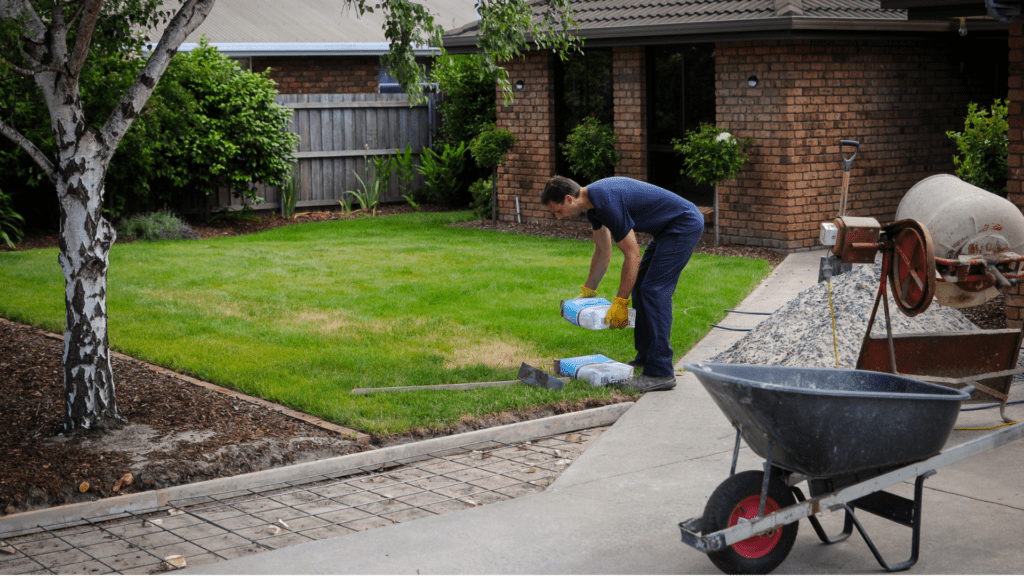
Driveway Edging And NZ Landscaping Trends
Driveway Edging Trends in New Zealand
When it comes to creating a stunning first impression for your home, driveway edging plays a crucial role. In New Zealand, homeowners are increasingly focusing on blending form and function, ensuring their driveways not only look aesthetically pleasing but also align with the surrounding landscape. Let’s dive into some of the latest trends in driveway edging that are making waves across the country.
Native Plants and Sustainable Materials for Edging
One of the most prominent trends in NZ landscaping today is the use of native plants and sustainable materials for driveway edging. Kiwis are passionate about preserving the natural beauty of their surroundings, and incorporating native flora into garden designs is a fantastic way to honor that. Plants like pōhutukawa, flax, and cabbage trees are popular choices. Not only do they provide a low-maintenance solution, but they also help promote biodiversity and reduce the need for chemical fertilizers or excessive watering.
Pairing these native plants with sustainable materials such as locally sourced stone or recycled concrete has become increasingly popular. These eco-friendly options not only lower the carbon footprint but also seamlessly blend with the natural beauty of New Zealand’s landscape. Many homeowners prefer to use timber from sustainable sources or stones that reflect the rugged beauty of NZ’s coastlines and mountains, ensuring that the overall look feels organic and timeless.
Blending Natural Materials with Garden Design
Another noteworthy trend is the combination of natural materials like stone, wood, and even gravel with garden designs. Driveway edging can go beyond simple borders; it’s now seen as a vital element that ties the entire landscaping together. Stone pavers, pebbles, and timber sleepers are widely used to create a cohesive look that mirrors New Zealand’s natural scenery.
For instance, in areas with lush greenery like the North Island, homeowners might opt for warm-toned timbers or natural stone to provide a soft, rustic edge to their driveways. Meanwhile, in places like Otago, known for its rugged terrain, sharper, more angular stones in cooler tones are more fitting. This combination of materials helps to highlight the contrast between the structured driveway and the organic shapes of the garden, all while respecting the natural aesthetic of the area.
Sustainability in Driveway Edging
Sustainability has become a significant focus for modern landscaping, with New Zealand homeowners leading the charge toward eco-friendly practices. As environmental awareness grows, recycled materials like crushed concrete or even repurposed railway sleepers are being used to create durable, eco-conscious driveway edges. These materials are not only cost-effective but also help reduce waste, a critical factor in New Zealand’s ongoing efforts to protect its pristine environment.
In addition, using locally sourced stone is a sustainable choice gaining popularity. By choosing materials that don’t need to be imported, homeowners can lower transportation emissions, further minimizing their environmental impact. Stones from local quarries in areas like Canterbury and Central Otago are often used to create driveway edging that feels rooted in the specific geography of the region.
Inspirational Driveway Edging Examples from Around NZ
Driveway edging styles vary greatly across New Zealand, reflecting both regional characteristics and individual homeowner preferences. In Auckland, for example, we’re seeing a rise in modern designs with clean lines and minimalist edging, often using sleek, black basalt stone to contrast with lush tropical greenery.
In contrast, Wellington homeowners often embrace the city’s hilly landscape by integrating terraced driveway edging using natural stone that blends effortlessly into the sloped terrain. This design approach not only enhances the driveway’s function but also creates a visually striking element that mirrors the city’s dynamic topography.
In rural areas, homeowners tend to go for a more organic look, incorporating timber or rough-cut stone to create a natural boundary. This style complements the sprawling green pastures and rugged coastlines typical of New Zealand’s countryside.
Regardless of location, one thing remains consistent: the growing trend of driveway edging that celebrates the natural beauty of New Zealand, utilizing sustainable, eco-friendly materials to craft landscapes that are as functional as they are beautiful.
Driveway edging in New Zealand is no longer just about defining the boundaries of your driveway; it’s about enhancing the overall aesthetic of your home and garden in a way that respects and celebrates the natural environment. By blending native plants, sustainable materials, and innovative design techniques, Kiwis are creating driveway spaces that are not only visually appealing but also environmentally responsible. Whether you’re in Auckland, Wellington, or a rural town, the latest trends in driveway edging will inspire you to design a space that is uniquely yours while staying in harmony with New Zealand’s stunning landscape.

FAQs: About Driveway Edging NZ
What is driveway edging and why is it important?
Driveway edging refers to the material used to line the sides of your driveway, creating a clear boundary between the driveway surface and the surrounding areas like your lawn or garden. It’s important because it enhances the curb appeal of your home, helps maintain the structure of your driveway by preventing material from spilling over, and improves water drainage by guiding water away from the driveway surface.
What types of materials are best for driveway edging in NZ?
In New Zealand, popular materials for driveway edging include concrete, brick or pavers, timber or railway sleepers, stone, metal, and gravel. Each material offers a different aesthetic and level of durability, so the best option depends on your specific needs, preferences, and climate considerations.
How does New Zealand’s climate affect driveway edging choices?
New Zealand’s varied climate, which includes heavy rainfall and coastal regions with salty air, can impact the longevity of certain materials. For instance, timber edging may require regular treatment to protect against moisture, while concrete and stone tend to hold up better in wet conditions. Considering your local weather conditions will help you choose a more durable option.
Can I install driveway edging myself, or do I need to hire a professional?
It depends on the complexity of the job. For simple installations like laying gravel or timber, DIY is often a viable option if you have the right tools and time. However, more complicated materials like concrete or pavers may require the expertise of a professional to ensure proper installation, longevity, and drainage.
How much does driveway edging cost in New Zealand?
Costs can vary depending on the material and the size of the project. Basic materials like gravel and timber are more affordable, while stone, brick, and concrete can be more expensive. On average, you might spend between NZD $20 and $50 per meter for materials, plus additional costs for professional installation if required.
What maintenance is required for driveway edging?
Maintenance will depend on the material you choose. Timber edging may require periodic staining or sealing to protect it from moisture. Gravel may need replenishing and occasional raking to keep it looking tidy. For more durable materials like concrete and stone, maintenance is minimal, though it’s still important to inspect them periodically for cracks or movement.
Can driveway edging help with water drainage?
Yes, driveway edging can significantly improve water drainage. Properly installed edging helps guide water away from the driveway surface and into designated drainage areas, preventing pooling and erosion. Materials like gravel and stone are especially effective at promoting natural drainage.
How long does driveway edging last?
The longevity of driveway edging depends on the material used. Concrete and stone are among the most durable, often lasting decades with minimal maintenance. Timber, on the other hand, may last 10 to 15 years but will require more maintenance. Gravel edges may need replenishing every few years, but the underlying structure can last much longer.
Are there eco-friendly driveway edging options available in NZ?
Yes, eco-friendly options include using recycled materials like reclaimed bricks or recycled concrete. Natural stone is also considered an eco-friendly option because it blends into the landscape and doesn’t require chemical treatments. Additionally, sustainably sourced timber can be used if you’re looking for a more natural look.
What are some current trends in driveway edging in New Zealand?
Current trends in driveway edging in New Zealand focus on sustainability and blending the natural landscape with modern design. Many homeowners are choosing natural stone or timber for a rustic, eco-friendly look, while others prefer sleek metal or concrete for a minimalist, modern appeal. Integrating native plants alongside the edging is also popular, adding to the natural aesthetic.
Conclusion
Driveway edging offers a wide range of benefits, from improving curb appeal to enhancing the durability and functionality of your driveway. By choosing the right materials whether it’s concrete, stone, brick, or timber you can create a look that complements your home’s style while providing practical benefits like reducing wear and preventing the spread of your driveway’s base material. Whether you’re aiming for a clean, modern appearance or a more rustic, natural vibe, there’s an edging option that will meet your aesthetic goals and practical needs. Edging not only adds definition and polish to the overall landscape but also helps in managing water runoff and extending the life of the driveway itself. Now is the perfect time to take a closer look at your driveway and consider how upgrading its edging could make a noticeable difference in both appearance and durability. Ready to enhance your driveway with the perfect edging solution for your home in New Zealand? Take the next step and explore the variety of materials and styles available to give your driveway the polished, long-lasting finish it deserves.
About the Author:
Mike Veail is a recognized digital marketing expert with over 6 years of experience in helping tradespeople and small businesses thrive online. A former quantity surveyor, Mike combines deep industry knowledge with hands-on expertise in SEO and Google Ads. His marketing strategies are tailored to the specific needs of the trades sector, helping businesses increase visibility and generate more leads through proven, ethical methods.
Mike has successfully partnered with numerous companies, establishing a track record of delivering measurable results. His work has been featured across various platforms that showcase his expertise in lead generation and online marketing for the trades sector.
Learn more about Mike's experience and services at https://theleadguy.online or follow him on social media:

